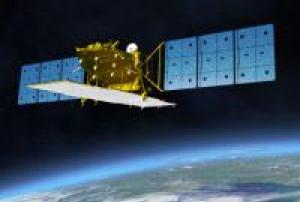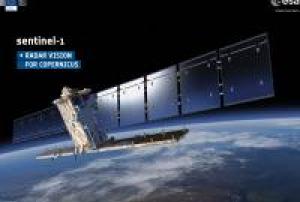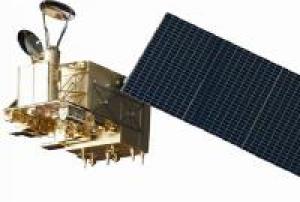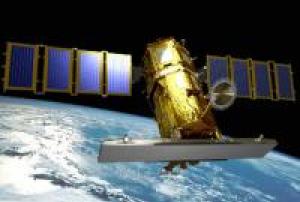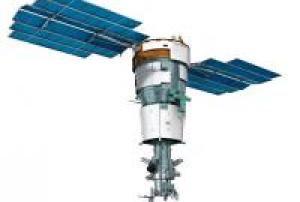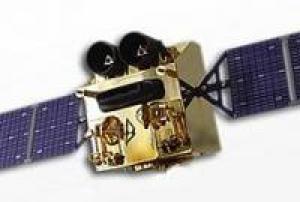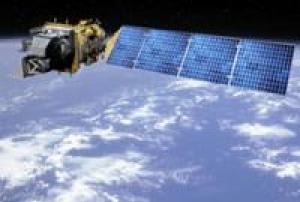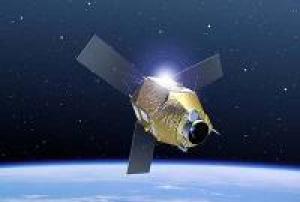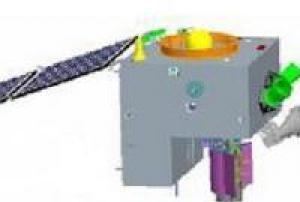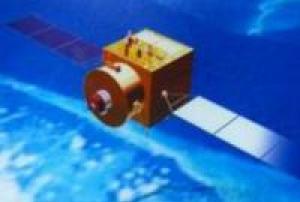Tsunami
Definition
Facts and figures
Further information
UN-SPIDER Regional Support Offices with hazard-specific expertise
Related content on the Knowledge Portal
ALOS-2 (Advanced Land Observation Satellite 2) is the follow-on JAXA L-SAR satellite mission of ALOS (Daichi) approved by the Japanese government in late 2008. The overall objective is to provide data continuity to be used for cartography, regional observation, disaster monitoring, and environmental monitoring.
The post-ALOS program of JAXA has the goal to continue the ALOS (nicknamed Daichi) data utilization - consisting of ALOS-2 (SAR satellite) and ALOS-3 (optical satellite) in accordance with Japan's new space program.The state-of-the-art L-band Synthetic Aperture Radar (SAR) aboard ALOS-2, which is an active microwave radar using the 1.2 GHz frequency range, which, in responding to society's needs, has enhanced performance. The SAR is capable of observing day and night, and in all weather conditions.
ALOS-2 has a spotlight mode (1 to 3 m) and a high resolution mode (3 to 10 m). It allows comprehensive…
read more24/05/2014- read more
Sentinel-1 is a two satellite constellation with the prime objectives of land and ocean monitoring. The goal of the mission is to provide C-Band Synthetic Aperture Radar (SAR) data continuity following the retirement of ERS-2 and the end of the Envisat mission.
To accomplish this the satellites carry a C-SAR sensor, which offers medium and high resolution imaging in all weather conditiions. The C-SAR is capable of obtaining night imagery and detecting small movement on the ground, which makes it useful for land and sea monitoring.
Sentinel-1 will work in a pre-programmed operation mode to avoid conflicts and to produce a consistent long-term data archive built for applications based on long time series.
The mission benefits numerous services. For example, services that relate to the monitoring of Arctic sea-ice extent, routine sea-ice mapping, surveillance of the marine environment, including oil-spill monitoring and ship detection for maritime security,…03/04/2014 The FY-3 series of CMA/NSMC (China Meteorological Administration/National Satellite Meteorological Center) represents the second generation of Chinese polar-orbiting meteorological satellites (follow-on of FY-1 series). The FY-3 series represents a cooperative program between CMA and CNSA (China National Space Administration); it was initially approved in 1998 and entered full-scale development in 1999. Key aspects of the FY-3 satellite series include collecting atmospheric data for intermediate- and long-term weather forecasting and global climate research.
read more
The FY-3 series satellites monitor large-scale meteorological disasters, weather-induced secondary natural hazards and environment changes, and provides geophysical parameters for scientific research in climate change and its variability, climate diagnosis, and predictions. The FY-3 series renders global and regional meteorological information for aviation, ocean navigation, agriculture, forestry, marine activities,…23/09/2013KOMPSAT-5 is an earth observation satellite equipped with Korea's first all-weather SAR.
The SAR mounted on KOMPSAT-5 emits microwaves to an object on the ground and synthesizes the reflected signal to produce an image. It enables ground observation even during nighttime and poor weather conditions.
As the SAR image can supplement the optical camera, which can record only the visible light spectrum, it is utilized in mutual supplementary operations with the high-resolution optical images of KOMPSAT-3 and KOMPSAT-3A.
KOMPSAT-5 observes the Korean Peninsula four times a day. The transmitted image data are used for public safety, natural disaster forecasts, land/resource management and environmental monitoring.The primary mission of the KOMPSAT-5 system is to provide high resolution mode SAR images of 1 meter resolution, standard mode SAR images of 3 meter resolution and wide swath mode SAR images of 20 meter resolution with viewing conditions…
read more22/08/2013Resurs-P1 is a Russian Earth observation satellite designed and developed at TsSKB Progress (Progress State Research and Production Space Center) in Samara, Russia. Roskosmos is funding the project (owner and operator of the spacecraft under the Russian Federal Space Program), the commercial data distributor is Sovzond JSC of Moscow. The spacecraft is operated by NTs OMZ (Research Center for Operational Earth Monitoring), Moscow, Russia.
Resurs-P1 is meant to replace the Resurs-DK, a previous generation spacecraft, which was launched on June 15, 2006.
Resurs-P carries the Geoton-L1 hyperspectral imaging payload as the main imaging instrumet. The optics have an apperture of 0.5 m and provides images with a ground resolution of 1.0 m in panchromatic mode and a resolution of 3 to 4 m in color mode. The Geoton-L1 system has 7 passbands and a 216-channel hyperspectral imager.
Aditionallym the KShMSA wide field…
read more25/06/2013Gaofen-1 (gao fen = high resolution) is the first of a series of high-resolution optical Earth observation satellites of CNSA (China National Space Administration), Beijing, China. The civilian HDEOS (High-Definition Earth Observation Satellite) program was proposed in 2006, it received government approval and was initiated in 2010. China plans to launch six HDEOS spacecraft between 2013 and 2016. The major users of the observation data will be the Ministry of Land and Resources, Ministry of Environmental Protection, and the Ministry of Agriculture.
The GF-1 spacecraft was launched on April 26, 2013 on a CZ-2D (Long March -2D) vehicle from the JSLC (Jiuquan Satellite Launch Center) in northwest China.Instruments:
read more
PMC (PAN and Multispectral camera)
WFI (Wide Field Imager)26/04/2013Landsat 8 launched on February 11, 2013, from Vandenberg Air Force Base, California, on an Atlas-V 401 rocket, with the extended payload fairing (EPF) from United Launch Alliance, LLC. The Landsat 8 satellite payload consists of two science instruments—the Operational Land Imager (OLI) and the Thermal Infrared Sensor (TIRS). These two sensors provide seasonal coverage of the global landmass at a spatial resolution of 30 meters (visible, NIR, SWIR); 100 meters (thermal); and 15 meters (panchromatic).
read more
Landsat 8 was developed as a collaboration between NASA and the U.S. Geological Survey (USGS). NASA led the design, construction, launch, and on-orbit calibration phases, during which time the satellite was called the Landsat Data Continuity Mission (LDCM). On May 30, 2013, USGS took over routine operations and the satellite became Landsat 8. USGS leads post-launch calibration activities, satellite operations, data product generation, and data archiving at the Earth…11/02/2013Launched in December 2011, Pleiades is a constellation of two very-high-resolution satellites capable of acquiring imagery of any point on the globe in under 24 hours for civil and military users.
read more
Pleiades has been observing and mapping Earth’s surface at a resolution of just 70 cm every day since December 2011. Comprising the Pleiades 1A and Pleiades 1B satellites, this space imaging system complements the capabilities of the SPOT satellites, which have a wider field of view than Pleiades but lower spatial resolution. What’s more, as Pleiades 1A and 1B are in the same orbit, together they can image anywhere on Earth in less than 24 hours. Pleiades imagery is used for both civil and military applications, for example to track urban expansion, monitor the planet’s active volcanoes or assist road and railway routing, and to locate adversaries’ military installations for mission planning. Pleiades’ key asset is an extremely sensitive optical…01/12/2012SJ-9 (Shi Jian = Practice) is a technology demonstration formation flight mission of CNSA (China National Space Administration), consisting of two minisatellites of different sizes and capabilities, SJ-9A and SJ-9B. The overall mission concept is to demonstrate the functionality of a range of newly developed formation flying techniques and components and to validate the formation flight GNC (Guidance, Navigation and Control) algorithms and strategies of the system configuration.
SJ 9B carries the LWIR (Long Wave Infrared) Camera as a technology experiment. The goal of the LWIR camera is to test mainly the functions of the instrument such as the focal-plane component and the long-life Stirling cryocooler which is designed to function as an autonomic research and development component. The camera features low-temperature optics. The operational temperature of optical system is kept in the range of -35ºC to -20ºC.…
read more14/10/2012SJ-9 (Shi Jian = Practice) is a technology demonstration formation flight mission of CNSA (China National Space Administration), consisting of two minisatellites of different sizes and capabilities, SJ-9A and SJ-9B. The overall mission concept is to demonstrate the functionality of a range of newly developed formation flying techniques and components and to validate the formation flight GNC (Guidance, Navigation and Control) algorithms and strategies of the system configuration.
SJ 9A is based on the CAST-2000 bus. It conducts in-orbit experiments for electric propulsion, high-precision- and high-stability control systems, high-efficienent power supply and advanced thermal control technology. The satellite features also instruments for Earth observation and component tests of indigenously developed technology.Instruments: High-performance small camera
read more
- integrated panchromatic and multispectral design
- swath width: 30km
-…14/10/2012

